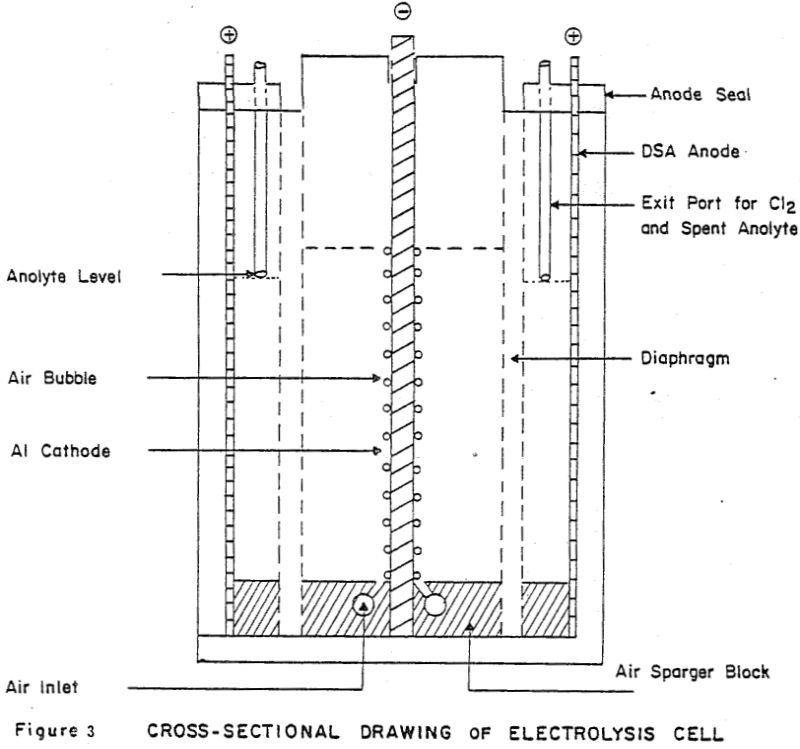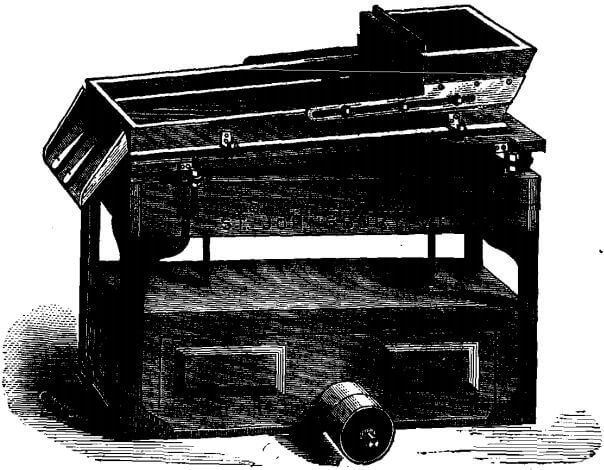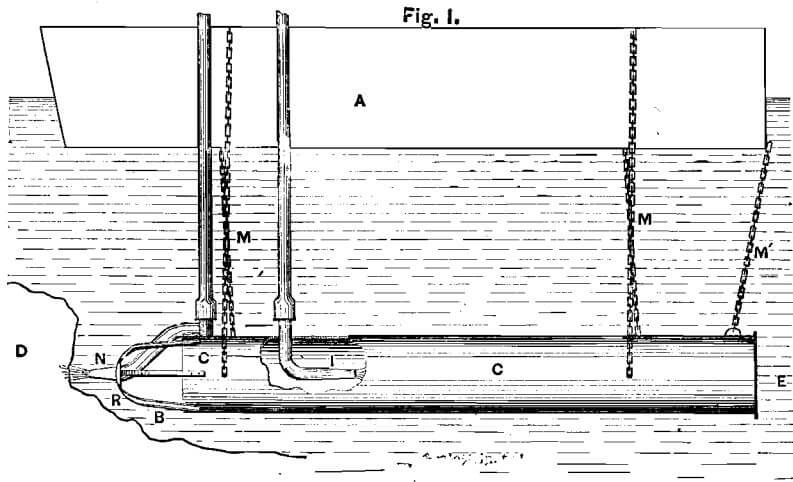Steam Dredge
The first steam dredge of the bucket type was launched on the Clutha in 1881. Such dredges differ from current-wheelers only in being provided with engine and boiler in place of the undershot wheel. The use of steam machinery, of course, increases the initial cost, adds to the working and maintenance expenses, and necessitates the […]
Current Wheel Dredge
In the Current-wheel Dredge, the mechanism on these dredges is driven by an under-shot water-wheel, placed at one or at both sides of the scow and rotated by the current. Such dredges work with most safety and regularity in about a 3-knot current. An instance of a machine of this kind is the Mannherikia dredge, […]
Gold Dredge Components
Dredge Hull Among dredging hands, the “ hull ”—namely, “ port ” and “ starboard ” pontoons tied together—is usually termed the “ pontoon ” or “ pontoons.” The ordinary hull consists of two long, narrow pontoons, joined together for about a third of their length by a third small one, equal in width to […]
Dipper Dredge
In its primitive form, the dipper dredge consists of a barge or pontoon, to the side of which is attached a long pole carrying a strong canvas or hide bag, or iron bucket, which is termed a ladle, spoon, scoop, or dipper, and which at times is provided with a blade or shovel. To the […]
Zinc Electrowinning from Chloride Electrolyte

Chemical and electrochemical leaching processes using chloride solutions (FeCl3, HCl, CuCl2) and dry chlorination with Cl2 gas followed by leaching of the resultant chlorides are some of the methods considered for treating fine-grained Zn-Pb-Cu-Fe sulphide ores and concentrates. These processes eventually result in an impure zinc chloride liquor which, after purification using either solvent extraction […]
Laboratory Regrind Mill
A laboratory stirred ball mill was used in a batch manner, with the milling time being varied so as to produce a number of different product size distributions diameter ratio of one, and has a jacket through which cooling water is passed. The vessel is mounted on a turntable which is located on a thrust bearing. The turntable is restrained […]
Uranium Precipitation by Hydrogen Peroxide
Uranyl peroxide precipitation offers two advantages over other precipitation methods, product purity and product handling. However, since it is a less well known process than ammonia, caustic or Mag-Ox precipitation, it is helpful to demonstrate the advantages of hydrogen peroxide by comparing its performance with the widely known and used ammonia precipitation process. First, product […]
Air Jig – Paddock’s Pneumatic Separator

The Paddock pneumatic ore separator is a jig, in which air is used instead of the fluid more commonly employed—water. Like the water jig, it consists of an inclined sieve, over which the crushed ore is passed, and through which the air is blown into the ore. The air current is intermittent, and being proportioned […]
Dredging Method

I desire to call the attention of the Institute to a novel system of dredging, which, it seems to me, may prove applicable, not only to river and harbor improvements, but also to certain varieties at least of alluvial and diluvial gold mining; that is, river-mining, bar-mining, coast-mining, and any other similar operations now carried […]
Solvent Extraction of Cobalt SX
The United States produces essentially none of the cobalt and less than 10 pct of the primary nickel it consumes each year. However, it has been estimated that U.S. resources of cobalt and nickel are 842,000 and over 15 million short tons, respectively. Present yearly domestic consumption of cobalt is about 9,000 short tons, while […]
